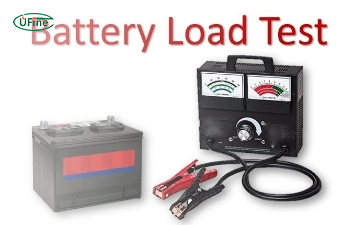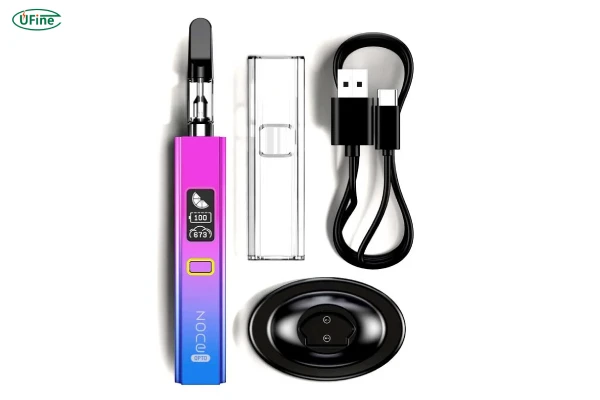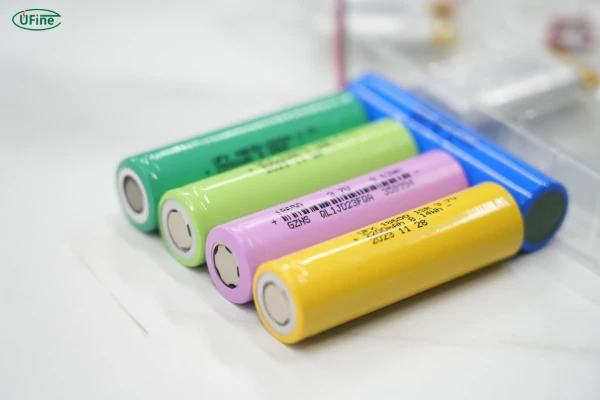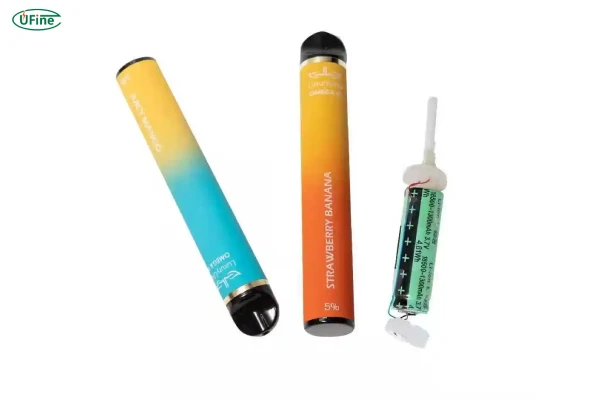
- Part 1. Common battery types used in vape pens
- Part 2. Built-in vs. replaceable batteries
- Part 3. Battery sizes and shapes
- Part 4. Voltage and wattage considerations
- Part 5. Ufine Battery — your custom lithium battery partner
- Part 6. Battery capacity (mAh) and how long it lasts
- Part 7. Safety features in vape pen batteries
- Part 8. Charging vape pen batteries
- Part 9. Signs your vape pen battery needs replacement
- Part 10. Tips for choosing the right vape pen battery
- Part 11. FAQs
This article breaks down the different types of batteries used in vape pens, their features, and how to choose the right one for your needs. Whether you’re a casual vaper or a seasoned enthusiast, understanding your vape pen’s power source will help you get the most out of your device.
Part 1. Common battery types used in vape pens
Vape pens generally use rechargeable lithium-based batteries due to their high energy density, long life cycle, and relatively light weight. Below are the most common types:
Lithium-ion (Li-ion)
- Most widely used in vape pens.
- Offers excellent capacity-to-weight ratio.
- Maintains stable voltage output for consistent performance.
- Typically available in cylindrical formats such as 18650 and 14500.
Lithium Polymer (LiPo)
- Lighter and more flexible in shape than Li-ion.
- Often used in ultra-slim vape pens or custom designs.
- Slightly more sensitive to overcharging, so quality charging circuits are important.
Nickel-Metal Hydride (NiMH)
- Less common in modern vape pens.
- Lower energy density compared to lithium-based batteries.
- More common in older or budget-friendly models.
Pro Tip: For most modern vape pens, lithium-ion or lithium polymer batteries are preferred due to their combination of power, portability, and lifespan.
Part 2. Built-in vs. replaceable batteries
Vape pen batteries come in two main configurations:
Built-in (Integrated) Batteries
- Sealed inside the device and charged via USB or magnetic chargers.
- Advantages: No need to purchase separate batteries; compact design.
- Disadvantages: Once the battery degrades, the entire vape pen often needs replacement.
Replaceable Batteries
- User-removable and rechargeable via external chargers.
- Advantages: Longer device lifespan; easy to swap a fresh battery when one is depleted.
- Disadvantages: Slightly bulkier design and higher upfront cost.
Choosing Between the Two:
If convenience and minimal maintenance are your top priorities, a built-in battery vape pen is a solid choice. If you value longevity and flexibility, go for a replaceable battery design.
Part 3. Battery sizes and shapes
Battery sizes are indicated by numbers representing their dimensions in millimeters. Common types include:
- 18650 — 18mm diameter, 65mm length; high capacity and widely used.
- 18350 — Smaller version for compact devices.
- 14500 — Similar size to AA batteries but rechargeable lithium-ion.
The size of your battery affects:
- Capacity (mAh) — larger batteries generally store more energy.
- Output power — higher-drain batteries handle demanding vaping styles better.
- Form factor — slim batteries fit discreet pen-style vapes; larger ones suit mods.
Part 4. Voltage and wattage considerations
Understanding voltage and wattage is key to controlling vapor production.
Fixed Voltage Batteries
- Deliver a set voltage output (e.g., 3.7V).
- Easy to use but less customizable.
Variable Voltage/Wattage Batteries
- Allow you to adjust output for different coil resistances and vape styles.
- Lower settings produce cooler vapor and conserve battery life.
- Higher settings create warmer vapor and bigger clouds but drain the battery faster.
Tip: Mouth-to-lung (MTL) vaping often uses lower voltage settings, while direct-to-lung (DTL) setups require higher wattage for thicker vapor.
Part 5. Ufine Battery — your custom lithium battery partner
When you need reliable, high-performance batteries for vape pens, Ufine Battery can deliver.
As a Chinese custom lithium battery manufacturer, Ufine Battery supplies:
- Lithium polymer batteries
- LiFePO4 batteries
- 18650 batteries
- Various cylindrical batteries
- Ultra-thin batteries
- High-rate batteries
- High- and low-temperature batteries
Batteries can be customized in size, voltage, capacity, and discharge rate to match your vape pen’s exact requirements.
For tailored battery solutions that ensure safety, efficiency, and consistent performance, contact us today to discuss your needs.
Part 6. Battery capacity (mAh) and how long it lasts
Capacity is measured in milliamp-hours (mAh) and indicates how long a battery can power your vape pen before needing a recharge.
- 300–500 mAh — Suitable for light, occasional use.
- 650–900 mAh — Good balance for average daily vaping.
- 1,000 mAh+ — Ideal for heavy users or high-wattage setups.
Factors That Affect Battery Life:
- Vaping frequency.
- Power settings.
- Coil resistance.
- Age and condition of the battery.
Part 7. Safety features in vape pen batteries
Safety is non-negotiable when it comes to vape pen batteries. Quality batteries include:
- Short-Circuit Protection — Prevents dangerous current surges.
- Overcharge Protection — Stops charging once full to avoid overheating.
- Over-Discharge Protection — Prevents damage from draining the battery too much.
- Temperature Monitoring — Shuts down the battery if it gets too hot.
Always buy from reputable sources to ensure your battery includes these protections.
Part 8. Charging vape pen batteries
Charging correctly not only extends battery life but also enhances safety.
Charging Methods
- USB Charging: Common for built-in batteries; convenient for travel.
- External Chargers: Recommended for replaceable batteries for better charge control.
Best Charging Practices
- Use the manufacturer’s recommended charger.
- Avoid leaving batteries charging overnight.
- Keep batteries away from extreme heat or moisture during charging.
Part 9. Signs your vape pen battery needs replacement
Even high-quality batteries degrade over time. Look out for:
- Reduced run time despite full charge.
- Battery feels unusually hot during use or charging.
- Visible swelling, dents, or corrosion.
- Device fails to power on consistently.
If you notice any of these signs, replace the battery immediately to avoid safety risks.
Part 10. Tips for choosing the right vape pen battery
When selecting a new battery, consider:
- Compatibility: Ensure it fits your vape pen model.
- Capacity vs. Size: Higher capacity is better, but only if it fits your device.
- Discharge Rate: Check that the battery can handle your coil’s power demands.
- Brand Reputation: Stick to trusted manufacturers to avoid low-quality cells.
Part 11. FAQs
What’s the safest battery for a vape pen?
A high-quality lithium-ion or lithium polymer battery from a reputable brand is generally the safest option, provided it includes proper protection circuits.
Can I use a higher mAh battery than recommended?
You can use a higher capacity battery if it fits and is compatible, but always check the manufacturer’s guidelines to avoid overheating or device damage.
How many times can I recharge my vape pen battery?
Most lithium-ion batteries last 300–500 full charge cycles before significant capacity loss occurs.
Can I fly with vape pen batteries?
Yes, but airline regulations typically require you to carry them in your hand luggage, not checked baggage.
Why is my battery blinking and not working?
This could indicate low power, a short circuit, or an issue with the vape pen’s internal electronics. Check the manual for specific blink codes.
Related Tags:
More Articles

Battery Load Test: A Comprehensive Guide
Step-by-step battery load test guide for car, solar & industrial use. Learn how to load test a battery, interpret voltage charts, and avoid common mistakes.
The Comprehensive Guide to Battery Balancing and Battery Balancer
Discover how battery balancers improve lithium battery performance, lifespan, and safety. Learn types, functions, and tips to choose the right balancer.
What Is the Best Voltage for a Chainsaw Battery?
Compare 12V-80V chainsaw batteries for light pruning, medium firewood, and professional cutting. See best battery chainsaw with runtime charts and safety tips.
Lithium VS. Alkaline Batteries: A Comprehensive Comparison
Lithium batteries last 3–7× longer than alkaline and perform better in cold weather. Compare lifespan, cost, safety, and best uses to choose the right battery.
Comparing Lithium-Sulfur and Lithium-Ion Batteries: Which is Right for You?
Compare lithium-sulfur (Li-S) and lithium-ion batteries on energy, lifespan, cost, safety, and applications. Best choice for drones, EVs, and electronics.





